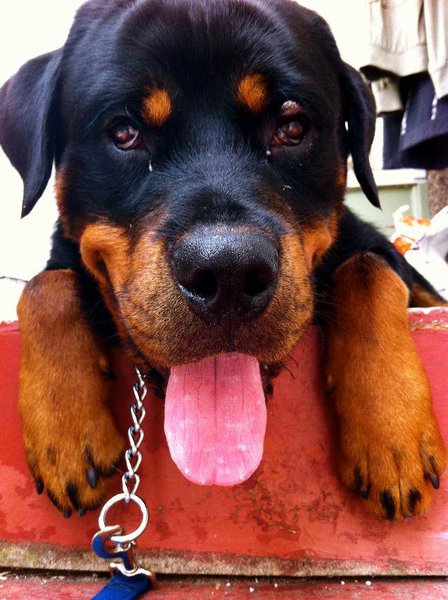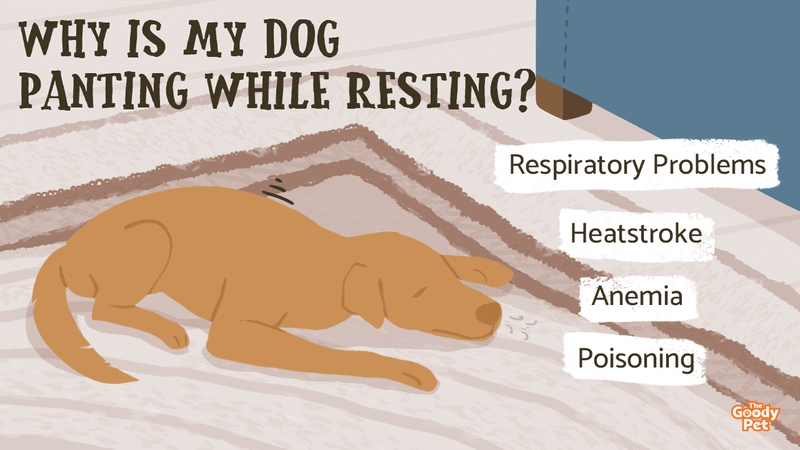Panting in dogs usually happens when your pooch has just engaged in intense exercise, when they are excited, or when they are feeling hot. Sometimes, however, dogs can pant too much, which can be worrying to you as a dog owner. So, what does it mean when a dog pants a lot?
Panting too much is a sign that something is wrong with your dog. Excessive panting is usually caused by overheating, which can easily lead to heatstroke. Panting can also be caused by issues like anxiety and respiratory problems.
If your dog is panting too much for an extended period of time, you should watch out for other signs of anxiety, such as pawing, restlessness, repetitive yawning, licking their lips, whining, potty accidents, and destructive behavior.
Anxiety in dogs can be caused by something like being left alone all day (separation anxiety), meeting new dogs, boredom, moving to a new house, and other disruptions to a dog’s routine.
If none of the above signs are present, which means that your pooch is not anxious, the next thing you need to do is to check whether your dog has respiratory problems.
Some of the signs of respiratory distress in dogs include heavy, raspy breathing, coughing, lethargy, restlessness, and extending their neck when breathing in or out.
Respiratory distress in dogs can be caused by illnesses like pneumonia, lung tumors, inflammation of the respiratory tract or lungs, and laryngeal paralysis.
You should note, however, that these are not the only reasons that could cause excessive panting in dogs. In this article, we are going to cover other reasons that could cause your canine buddy to pant too much, including arthritis, pain, heart failure, and Cushing’s disease.
You will also notice your dog panting and breathing fast during a thunderstorm or when they are in unfamiliar situations, which makes you wonder, does fear lead to panting in dogs? Let’s find out.
Do Dogs Pant When Scared?
Yes. It is normal for some dogs to pant and breathe fast when they are scared or afraid, such as during a thunderstorm or when another dog is threatening them.
If your four-legged buddy is panting because they are scared, the panting will be accompanied by fearful body language. Some of the signs of fear in dogs include trembling, scratching, growling, restlessness and pacing, drooling, cowering, ears held backward, failure to hold eye contact, and inappropriate elimination.
If you notice that certain situations or stimuli cause your pooch to pant excessively and exhibit fearful body language, it is advisable to get your dog from the situation that is triggering their fear.
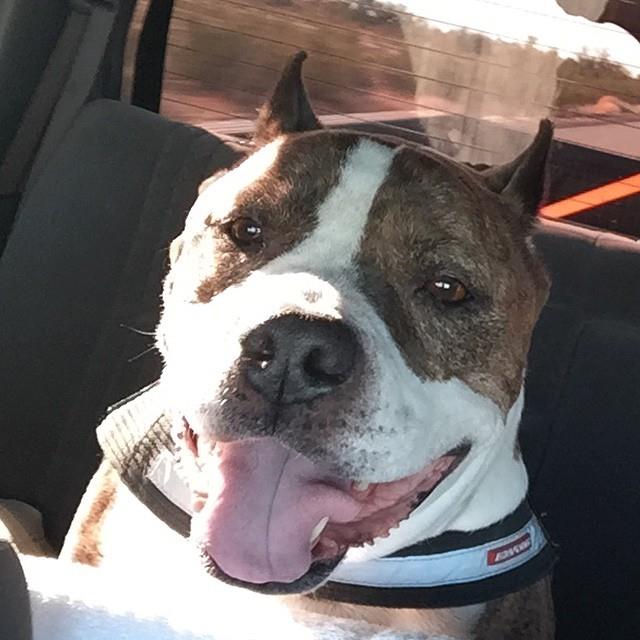
Can Arthritis In Dogs Cause Panting?
Arthritis will make your dog experience pain and distress, which can lead to excessive panting. Arthritis is a condition that is caused by damage to the cartilage in your dog’s joints, especially due to old age, leading to pain during movement.
Some of the signs that your dog is suffering from arthritis include the following:
Limping Or Changed Gait
This is the most obvious sign of arthritis in dogs. Since movement causes a lot of pain, this can lead to limping. Sometimes, instead of a noticeable limp, your dog will have subtle gait changes in an attempt to lessen their pain while walking or running.
Slower Movements
With movement causing a lot of pain, your dear Fido will avoid lots of fast movements, opting instead for slow movements that cause the least amount of pain. This is especially apparent when your beloved pooch is sitting down or standing up.
Change In Posture
If you notice that your dog seems to have changed their normal posture, this can be another sign of arthritis. For instance, if placing a lot of weight on one leg causes pain, your pooch will adjust its posture to take off as much weight as it can off this leg.
Avoiding Certain Areas
You will also notice that your dog will start avoiding certain areas that require complex movements that are painful for them. For instance, your dog could start avoiding going up or down the stairs because this causes them a great deal of pain.
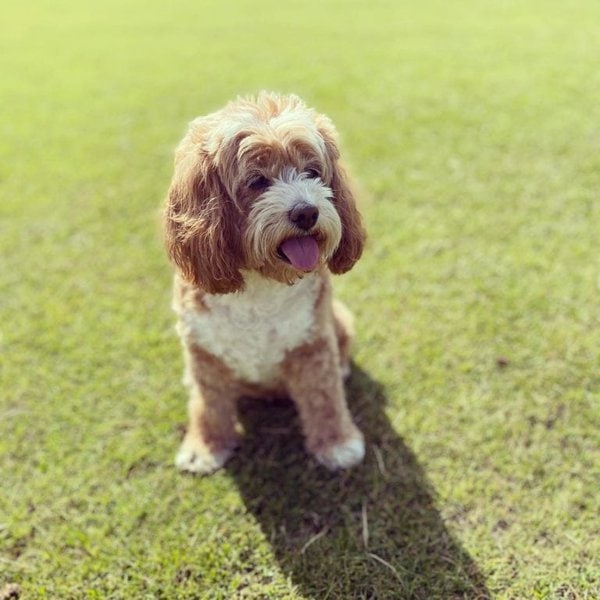
Can Panting Be A Sign Of Pain In Dogs?
Panting and rapid breathing can also be a sign of pain in dogs. Pain causes dogs to pant involuntarily, the same way pain can cause you to wince involuntarily.
The panting and rapid breathing will usually come before more obvious signs of pain, such as whining or limping.
Considering that panting can also be caused by other issues, however, how can you tell if your dog is in pain, or if there’s something else going on?
Some other signs of pain in dogs include:
Antisocial Behavior
If a dog who was previously very social spends a lot of time hiding, this is a sign that your dog could be in pain. Similarly, if your dog used to come running to greet you when you come home from work, but they now ignore you and continue lying in the corner, there is a high chance they are in pain.
Decrease In Appetite, More Sleeping
When dogs are in pain, they will spend a lot of time sleeping. This could be due to the fact that movement is painful for them, or because they are trying to heal.
Dogs who are in pain will also experience loss of appetite, eating and drinking much less than they used to. If this goes on for a long period of time, it will often lead to weight loss.
Agitation And Aggressive Behavior
If a dog who is usually friendly suddenly starts showing signs of agitation and aggression, this is a sign that they are in pain.
Does your dog snap at you or try to bite when you try to touch them, or when you move your hand towards certain areas of their body? This shows that they are feeling pain in this area.
Vocalizing Their Pain
When the pain is extreme, your dog will vocalize the pain through whining, snarling, growling, yelping, and even howling.
Other Signs
Other signs that your canine buddy is in pain include excessively licking one area of their body (the affected part), licking their paws excessively in an attempt to soothe themselves, loss of potty training, mobility difficulties, changes in body posture, shaking, and so on.
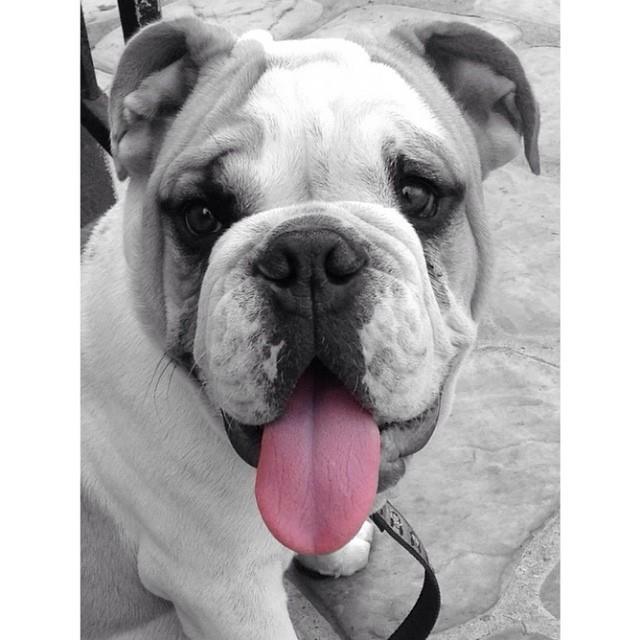
Is Panting A Sign Of Heart Failure In Dogs?
Heart failure in dogs will often lead to the accumulation of fluid in the lungs and chest cavity, thus making it difficult for your dog to breathe. This can lead to panting as your dog tries to take in more oxygen.
Heart failure is a condition that reduces the ability of your dog’s heart to pump blood throughout the body. Instead of pumping out all the blood, some of it flows back into the left auricle and backs up to the lungs, where it accumulates.
This, in turn, reduces the ability of the lungs to absorb oxygen, which is why dogs with heart failure will have breathing difficulties and start coughing. So, how do you know when your dog has heart failure?
Some signs of heart failure in dogs include constant panting and breathing difficulties, reduced tolerance for exercise, lethargy, fatigue, coughing up blood, and a pot-bellied appearance due to the buildup of fluid in the abdomen, loss of appetite, and excessive sleeping.
In advanced stages, dogs with heart failure will faint or collapse without warning. Fortunately, if the condition is detected early, your dog can get treated and have a long and happy life.
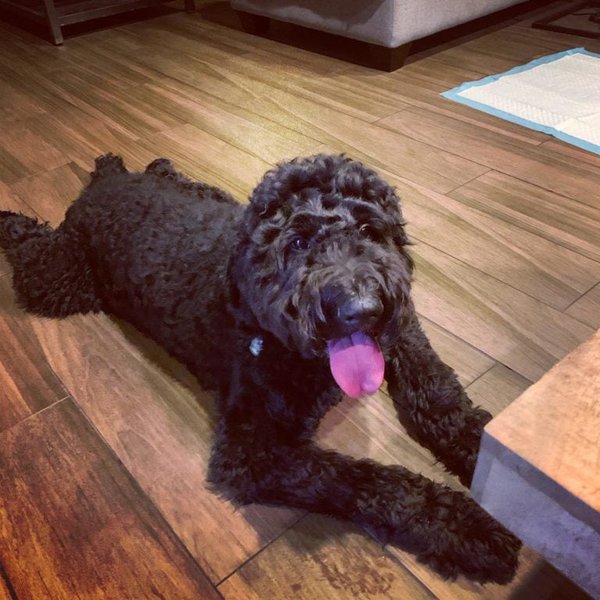
Is Panting A Sign Of Cushing’s Disease In Dogs?
Panting in dogs can also be a sign of Cushing’s disease, a condition that is caused by malfunctioning of the adrenal glands, leading to the production of excessive amounts of cortisol.
High levels of cortisol have three effects that lead to panting in dogs. First, high cortisol levels lead to the weakening of the muscles, including the muscles involved in respiration.
Second, high cortisol levels lead to an increase in the size of the liver, which, in turn, makes it difficult for the diaphragm to expand during inhalation.
Finally, excessive cortisol levels cause weight gain, which results in high amounts of fats being deposited around the chest and abdomen, thus decreasing space for the lungs to expand during inhalation.
These three effects make it difficult for a dog with Cushing’s disease to breathe properly, which is what causes panting in affected dogs.
What Are The Symptoms Of Cushing’s Disease In Dogs?
Dogs with Cushing’s disease will exhibit symptoms such as excessive panting, increased thirst, more frequent urination, and increased appetite, which can lead to obesity and diabetes, a pot-bellied appearance, and loss of muscle mass.
The high levels of cortisol caused by Cushing’s disease also affect your dog’s skin and fur, so you’ll notice signs like thin skin, thinning hair and loss of hair (alopecia), dry and brittle fur, and generally unhealthy skin.
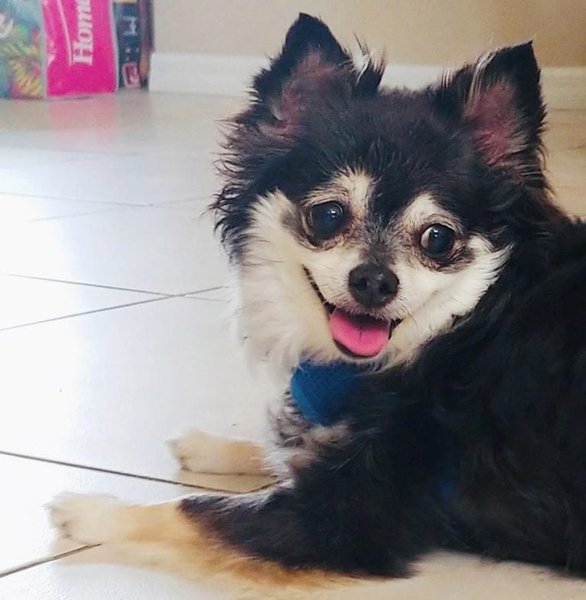
Why Does My Older Dog Pant So Much?
If your older dog is panting so much, this can be a sign that their old age has started affecting their health.
It is normal for older dogs to pant a lot more than younger dogs after some exercise or when they are hot or excited.
This happens because they are not as energetic as the younger dogs, which means their bodies have to work harder to bring down their body temperature and provide enough oxygen during periods of intense physical activity.
If you notice that your senior dog is panting at night when it is not hot and when they have not been involved in any physical activity, this may be caused by the weakening of the diaphragm and intercostal muscles due to old age. Weakening of these muscles leads to breathing difficulties, which can cause panting.
Sometimes, however, your senior dog panting at night could also be a sign of more serious problems. Common problems that could cause your older dog to pant at night include arthritis and some forms of cancer.
These diseases make it difficult for your pooch to sleep comfortably throughout the night, which is what leads to panting. However, the best way to know what is causing the panting is to take your senior dog to the vet for a checkup.
What Are Signs Of A Dog Dying Of Old Age?
A lot of panting in senior dogs may well signify that your dog is nearing the end of its life. In addition to panting, other signs that a dog is dying of old age include:
- Confusion
- Loss of appetite and weight loss
- Loss of coordination
- Extreme fatigue
- Not drinking water
- Loss of interest in activities the dog used to enjoy
- Incontinence and vomiting
- Slow respiration
- Muscle twitching
- Dulling of the eyes
- Increased self-isolation
- Loss of consciousness
If you notice any of these signs and symptoms in your senior dog, you should consult your vet so that they can advise on the way forward.
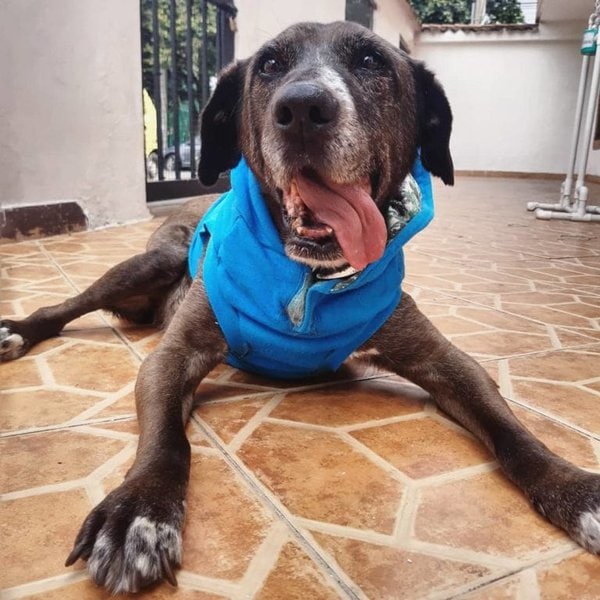
When Should I Worry About Dog Panting?
You should worry about your dog’s panting if they’re panting even when they are not excited and have not been involved in physical activity, if the panting looks excessive compared to your canine’s normal panting, or if it is accompanied by worrying signs and symptoms.
It is a bad sign if your dog pants a lot and at the same time exhibits some of the following symptoms:
- The panting starts all of a sudden, even when your dog is resting.
- Your dog is panting even though they are not overly warm.
- The panting seems to require a lot of effort from your dog.
- The panting sounds harsh or raspy.
- The panting has been going on for a long time.
- Your dog seems to be in pain or discomfort.
- Your dog is shaking or trembling.
- The panting is accompanied by change in color in your dog’s tongue or gums. If the tongue and gums look purple, blue, or white, this is an indicator that there isn’t enough oxygen in your dog’s blood.
If you notice any of these symptoms in addition to panting, you should seek immediate veterinary attention for your four-legged buddy. These signs show that your dog could be having a very serious health issue.
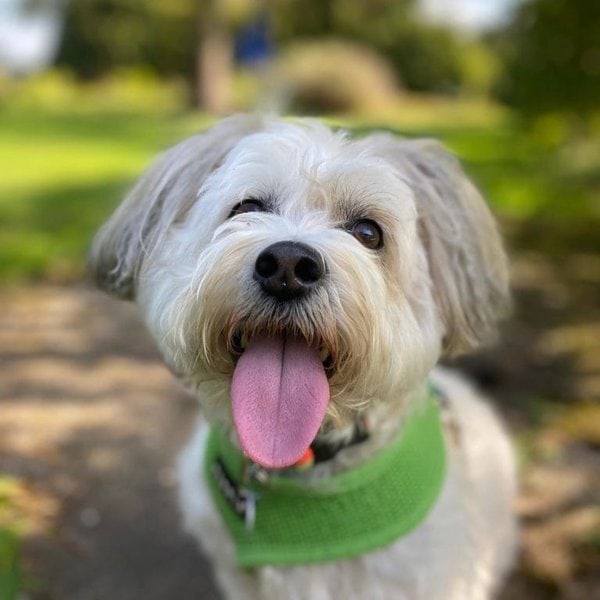
How Much Panting Is Normal For A Dog?
Normal panting in dogs correlates with two things – activity and external temperatures. If your dog is physically active or excited, it is perfectly normal for them to pant. Dogs will also pant when external temperatures are high.
Panting works as a cooling mechanism since dogs don’t have sweat glands on their skin. If your dog is panting because of any of the above reasons, the panting will stop within a short while, after your dog has managed to cool itself down.
However, if you cannot tell why your dog is panting, or if the panting goes on for an extended period of time, then this kind of panting is abnormal and requires a vet’s attention.
In the next sections of this article, we are going to look at various scenarios where it is abnormal for your dog to be panting, including panting when your dog is resting, panting while sleeping, and panting when it’s not hot, as well as what you can do about it.
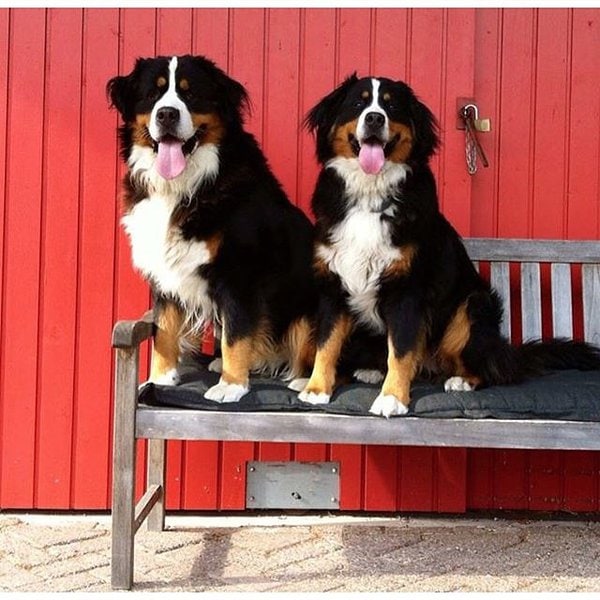
Why Is My Dog Panting While Resting?
If your dog is panting while resting, there is nothing wrong if they’ve just finished some physical activity. However, if your dog is panting despite having been resting for some time, this is a sign of trouble.
Panting while resting can be caused by problems such as heatstroke, respiratory illnesses, anemia, and poisoning.
Heatstroke
When it’s hot, humans regulate their body temperature through sweating. However, dogs don’t have sweat glands. Instead, they use panting as a thermoregulation mechanism.
Panting allows moisture to evaporate from the dog’s tongue and upper respiratory tract, thus cooling its body temperature. Normally, this happens when your dog is active.
If your dog is panting excessively even when they are resting, this could be a sign that their body temperature has become excessively high, putting your dear Fido at risk of heatstroke.
Other symptoms of heatstroke in dogs include drooling and reddened gums. In extreme cases, your dog will start vomiting, lose coordination, become mentally dull, and they will eventually collapse. If no action is taken, heatstroke can lead to death.
Respiratory Problems
Panting even when your dog is resting can also be a sign that your dog is experiencing some respiratory problems that are making it hard for them to breathe.
Some respiratory problems that could lead to panting include lung tumors, pneumonia, lungworm, tracheal collapse, bronchitis, laryngeal paralysis, and accumulation of fluid in the lungs.
Anemia
This is a condition that is caused by excessive loss of blood, insufficient production of red blood cells, or when your pooch’s immune system sees the red blood cells as a threat and destroys them.
Low levels of red blood cells interfere with your dog’s ability to absorb oxygen, so your dog will start panting in a bid to get more oxygen into their blood. Other symptoms of anemia in dogs include lethargy and fatigue, weakness, pale gums, and jaundice.
Poisoning
If your dog has consumed something that is toxic to them, this can lead to panting, especially if the toxin has affected your dog’s ability to absorb oxygen. Common toxins that can cause this reaction include onions and garlic.
Dogs that have ingested something toxic will also exhibit other symptoms like diarrhea, vomiting, and excessive drooling.
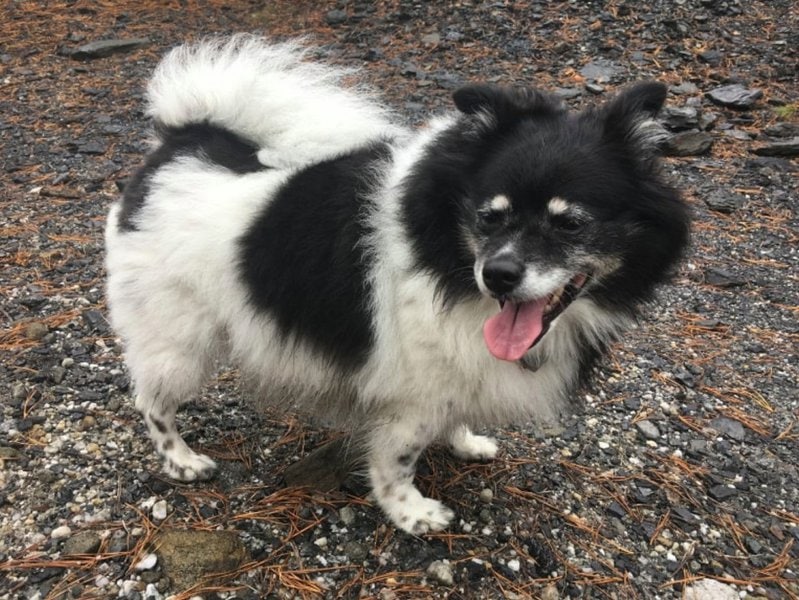
Is It Normal For Dogs To Breathe Fast While Sleeping?
It is normal for dogs to breathe fast while sleeping. However, this happens for short periods of time while your dog is dreaming. If the panting goes on for extended periods, this is a cause for alarm.
Have you ever dreamt of being chased, only to wake up and find yourself breathing heavily and drenched in sweat? This happens because your brain can’t tell that you’re dreaming, and therefore, even if you’re not actually running, it triggers the same responses that normally occur when you’re running in real life.
The same thing happens in dogs when they are dreaming. If your dog has a high-energy dream, this can cause your dog to breathe fast while they are sleeping. However, sleep cycles in dogs are very short, lasting for about 20 minutes. This means that panting that is caused by a dream should only last for a couple of minutes.
If the panting and rapid breathing go on for an extended period of time while your dog is sleeping, this is a sign of illness. Some illnesses that can cause your dog to pant excessively at night include breathing problems like asthma, cardiovascular problems, or allergies.
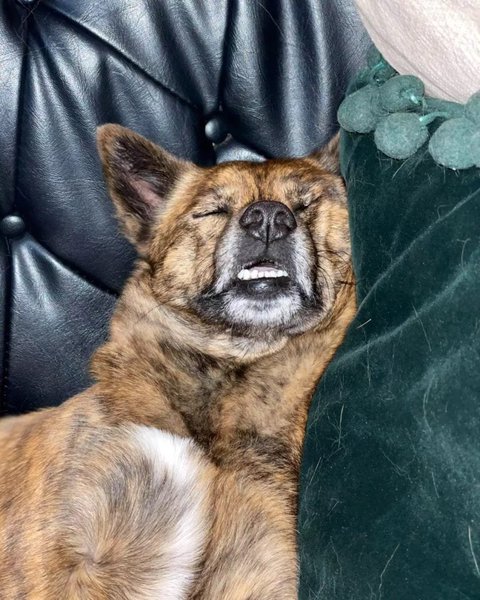
Why Is My Dog Panting So Much When It’s Not Hot?
If your dog is panting so much even when it is not hot, this can be caused by brachycephalic syndrome, poisoning, heart failure, obesity, or Cushing’s disease.
If your dog is a brachycephalic breed, their flat noses and narrow respiratory tracts can easily get obstructed, leading to a condition known as Brachycephalic Obstructive Airway Syndrome. This syndrome can lead to panting even when it’s not hot. Care should be taken to ensure such dogs don’t get too hot since the condition can easily become life-threatening.
If your dog has ingested something poisonous or something they are allergic to, this can also lead to panting even when they are not hot. If you have reason to believe your pooch has eaten something they shouldn’t, you need to rush them to the vet.
Panting when it’s not hot can also be caused by heart failure, as this cardiac malfunction affects a dog’s ability to breathe. Problems like Cushing’s disease can also cause breathing problems and cause panting.
Finally, if your dog is obese, fat deposits in the chest cavity can lead to breathing difficulties and cause panting even when it’s not hot. Obesity also increases the risk of other diseases that can cause panting, like cardiac problems and arthritis.
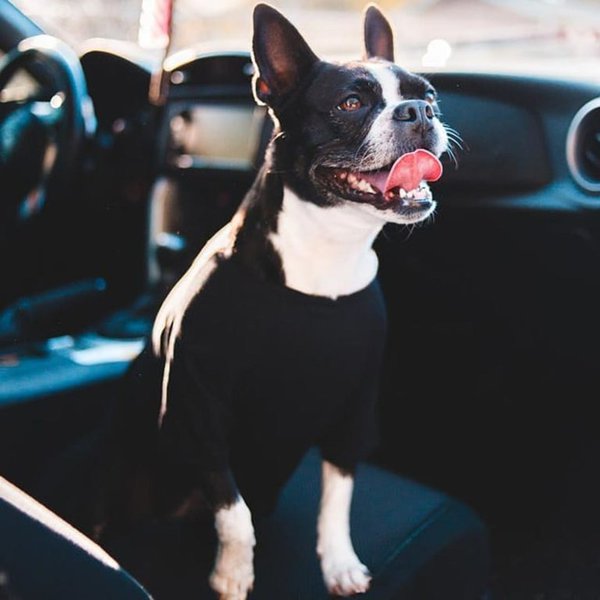
How Do You Calm A Dog From Panting?
Some things you can do to calm a panting dog include giving cool water, taking your pooch somewhere cool, making your dog feel safe, or using an anxiety jacket.
Give Your Dog Cool Water
Giving your dog some cool water to drink is the fastest way of calming down a dog that is panting. Remember, the chief reason why dogs pant is to bring down their body temperature. Drinking cool water lowers your dog’s body temperature quickly, thus eliminating the need for panting.
Put Your Dog In A Cool Environment
The longer your canine buddy stays in the hot environment, the more they will need to pant in order to cool down. Taking them to a cooler environment allows the cooling to happen a lot faster. For instance, if it’s hot outside, take your dog inside and turn on the fan or air conditioning.
Make Your Dog Feel Safe
If your dog is panting because they are scared, you’ll need to calm them down in order for the panting to stop. A good way to do this is to cuddle or pet your dog. This reassures them and shows that you are there to protect them, which can go a long way in relieving their fear.
Another way to make your dog feel safe is to remove them from the situation or environment that is making them scared. For instance, if there is another dog that is making your dog feel scared, take your dog to a separate room where they can’t see the threatening dog.
Use An Anxiety Jacket
Anxiety jackets can also be an effective way of calming down a dog who is panting because of fear and anxiety. The snugness of the anxiety jacket soothes your dear Fido and gives them a sense of security, which can help calm down their anxiety and reduce the panting.
If you choose this option, we recommend the Thundershirt Classic Dog Anxiety Jacket. This jacket will help calm down your furry companion during thunderstorms, during travel, and when you’ve left your doggie alone, thus reducing the likelihood of panting.
How Can I Help My Dog Breathe Better?
If your dog has breathing difficulties, you can help them breathe better by reducing exercise or excitement, using a humidifier, or using dog-appeasing pheromones.
Reduce Exercise
If your dog has engaged in intense physical exercise, their oxygen requirement is higher, which means they need to take in more air. This can put a strain on your dog’s respiratory system.
Therefore, if you notice that your dog has trouble breathing, don’t allow them to engage in very strenuous activity. This is particularly important to dogs whose breathing problems have been brought about by old age.
Use A Humidifier
For dogs with respiratory problems like bronchitis and asthma, you can make it easier for them to breathe by placing a humidifier close to your doggie’s sleeping area.
Use Dog Appeasing Pheromones
If your dog is having breathing difficulties due to anxiety, dog-appeasing pheromones can help calm your dog down, which can, in turn, help your dog to breathe normally.
Dog appeasing pheromones work by producing calming pheromones that are similar to those produced by a nursing female dog.
The ADAPTIL calming collar is a great option for calming down your pooch and helping them breathe better. The pheromones in this collar are safe as they are made from all-natural ingredients. Each collar is said to last four weeks.
If your dog’s breathing doesn’t improve, take them to the vet as soon as possible. Breathing problems should never be ignored since they can quickly become life-threatening.
How Can I Help My Dog With Respiratory Problems?
Respiratory problems can be fatal for your pooch, so the best way to help a dog with respiratory problems is to have them examined by a vet for the problem to be diagnosed and treated.
Depending on the condition that is causing the respiratory problem, your vet could prescribe some medication. Sometimes, surgery will be recommended, particularly when the respiratory issue is caused by an accumulation of fluid in the lungs.
The vet could also recommend a special diet, especially if your dog’s respiratory problems are caused by a cardiovascular issue.
